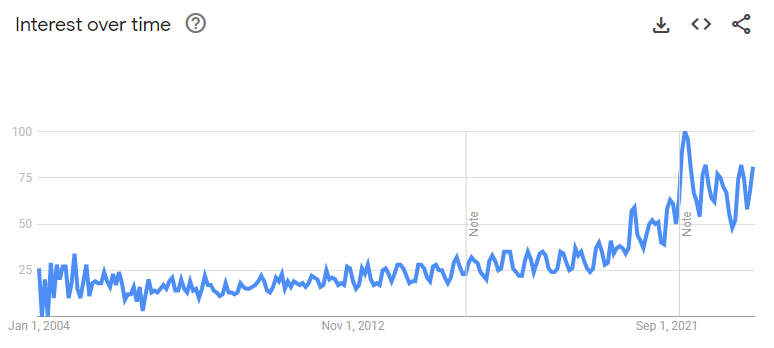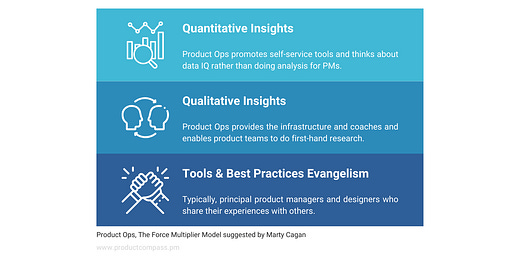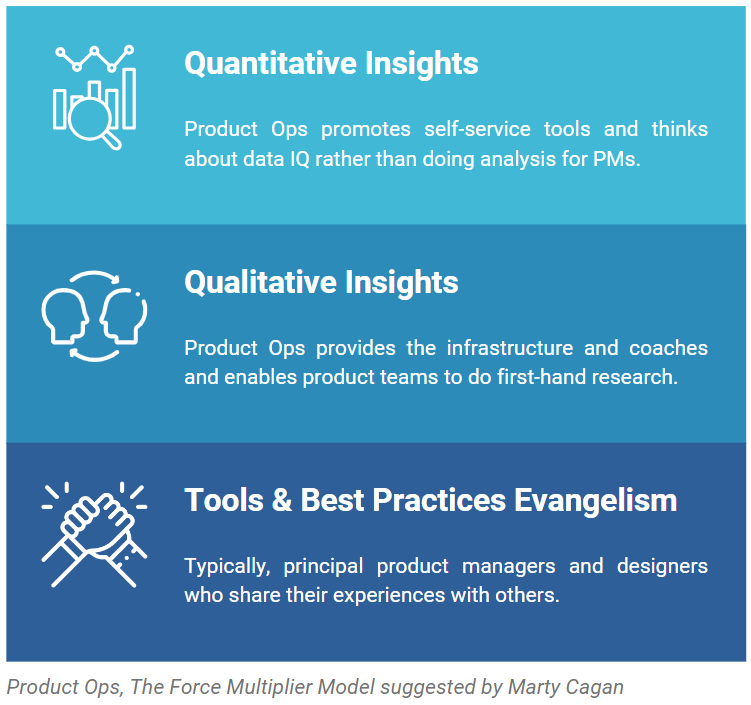What Is Product Operations?
The Golden Standard by Marty Cagan. Scaling with leaders. Do not let the process become the thing.
Hey, Paweł here. Welcome to the freemium edition of The Product Compass.
Every week, I share actionable tips and advice for PMs.
Here are some posts you might have recently missed:
[Free] Product Innovation: Stop Inventing Cool Sh*t Your Customers Don’t Want!
[Free] What is Product Management?
Product Vision vs Strategy vs Goals vs Roadmap: The Advanced Edition
Subscribe now, if you haven’t already, for the full experience:
What Is Product Operations?
In today’s newsletter I’d like to reflect on Product Operations (aka. Product Ops).
The term's popularity has been consistently growing over the last few years. And I get questions about it regularly.

Unfortunately, there are many misconceptions about Product Operations, some of which are dangerous to product organizations.
Before we go further, I want to emphasize that this post contains only my opinions. In particular, it doesn’t represent the opinions of anyone mentioned in this post.
Let’s dive in:
Common Definitions of Product Operations
The Force Multiplier Model by Marty Cagan
🔒 Product Operations by Melissa Perri and Denise Tilles, Critical Review
🔒 Conclusions
1. Common Definitions of Product Operations
What exactly is Product Operations?
There is no single definition. Almost everyone defines the term differently.
A masterclass on this can be found in the Product Ops Overview by Marty Cagan, in which he defined six Product Ops models:
The Reincarnated PMO Model: This model resurrects the rigid control of the old Product Management Office (PMO), stifling agility with excessive processes, like those some of us know from SAFe. This results in limited autonomy and lengthy approvals.
The Two-in-a-Box PM Model: This model splits PM’s responsibilities with a "Product Ops Manager," aiming to lighten your load. Whether it’s a Product Manager and Product Owner or Product Manager and Business Analyst, the result is similar to having a brain lobotomy. For more information, see my previous post, Product Owner vs Product Manager: What's the difference?
The Delegated Product Leader Model: In this model, Product Ops takes over coaching, one of the main responsibilities of managers (Marty used the term “product leaders,” but as he explained in the past, those are attributes of a manager). For more information, see The Product Leadership Playbook.
Production Operations Rebranding Model: This model simply relabels existing support roles as "Product Ops." While it might attract talent, it can create confusion and potential tension with existing teams.
The Product Marketing Manager Rebranding Model: Similar to the previous model, this one repurposes product marketing roles under the "Product Ops" umbrella. I have explained the difference between PMMs and PMs and why they should collaborate closely in the past in Product Management vs. Product Marketing vs. Product Growth 101.
The Force Multiplier Model: According to Marty, this is the golden standard. In this model, Product Ops enables product teams with quantitative insights, qualitative insights, tools, and best practices. I will cover it in more detail in the next point.
2. The Force Multiplier Model by Marty Cagan
In The Force Multiplier Model, which Marty calls “the golden standard,” Product Ops enables product teams with three pillars:
Quantitative Insights
Qualitative Insights
Tools & Best Practices Evangelism
The critical word here is the “enables.” In the past, Marty argued that, as organizations grow, there are two main ways that organizations attempt to scale:
2.1 Organizations scaling with leaders (the managers)
While product leadership is hard, it’s necessary and can’t be delegated:
”In every strong product company I know, the key to scale has been their leaders. In particular, their managers, and the commitment of those managers to coaching and developing their makers.” - Marty Cagan, Process People
According to Marty, in large organizations, there is an argument to be made that there are economies of scale. Still, the most common way strong product companies address this is with individual contributors, not process people:
“But the most common way I have seen this addressed at strong companies is with a principal product manager (or other senior individual contributor product manager) (…) So when the goal is to share the best practices of the best product people, these principal product managers would often be the obvious answer.” - Marty Cagan, Process People Continued
Even though senior individual contributors can help, they can’t replace the leaders (the managers):
“Probably the most often overlooked element to strong management is coaching. It is the single most important responsibility of every people manager to develop the skills of their people.” - Marty Cagan, Product Leadership Is Hard
2.2 Organizations scaling their process
As Marty noticed, many “process people” have never performed either the maker role or the manager role in a strong product company. It’s difficult to expect them to guide others:
“The Force Multiplier Model depends on highly skilled people in these areas, otherwise they can have the opposite effect: reducing the effectiveness of the product teams that depend on them.” - Marty Cagan, Product Ops Overview
Even assuming you have a competent person, standardized processes are simply a poor fit for most teams:
“And finally, if you believe as I do that there is no one right way of doing product, then the very notion of standardizing a process across a large organization just means that you’ll be institutionalizing a process that will be a poor fit for most teams.” - Marty Cagan, Process People
That’s similar to what Jeff Bezos believes:
“Good process serves you so you can serve customers. But if you’re not watchful, the process can become the thing. This can happen very easily in large organizations. The process becomes the proxy for the result you want.” - Jeff Bezos, 2016 Letter To Shareholders
This way of thinking is also deeply embedded in the culture of other strong product organizations like Netflix:
“If you give employees more freedom instead of developing processes to prevent them from exercising their own judgment, they will make better decisions and it’s easier to hold them accountable.” - Reed Hastings, No Rules Rules
3. Product Operations by Melissa Perri and Denise Tilles, Critical Review
Keep reading with a 7-day free trial
Subscribe to The Product Compass to keep reading this post and get 7 days of free access to the full post archives.




